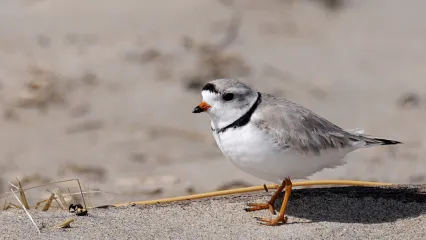
Description
This bird is smaller than a house sparrow. In winter, its plumage is an olive brown on the back and head with a grayish-brown breast, belly and sides. It has a brownish bill, yellow-tinged face and throat, and white wing bars. During spring and summer, males have a brilliant yellow body, a black cap, and black wings with white wing bars. American goldfinch are sometimes confused with the pine siskin, which has streaks on its back and breast and yellow on its wings and tail.
Size
Approximately 4.3 to 5.1 inches in length. Wingspan of 7.5 to 8.7 inches.
Habitat
These birds can be found in weedy fields, woodland edges, riparian areas, parks and gardens. They are common winter visitors to urban and residential neighborhoods. American goldfinch can be found statewide.
Life Cycle
At feeders, American goldfinch eat black-oil sunflower seed and thistle. Away from feeders they forage for seeds, insects and berries.
How To Observe
These birds feed almost exclusively in flocks with little aggression towards each other. Tube feeders help reduce competition as larger birds find it difficult to land on the short perches. Feeding flocks of American goldfinch are vocal during winter when many birds are quiet. Flocks may be as small as five birds or larger than 150.


